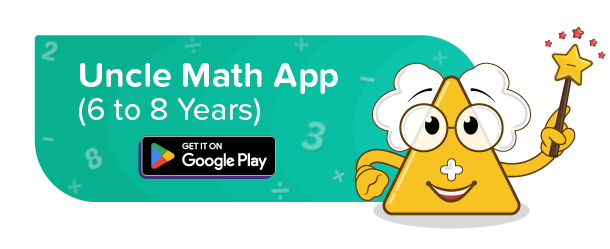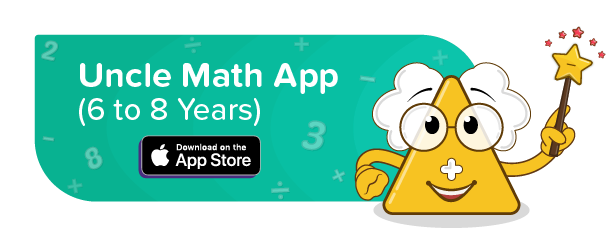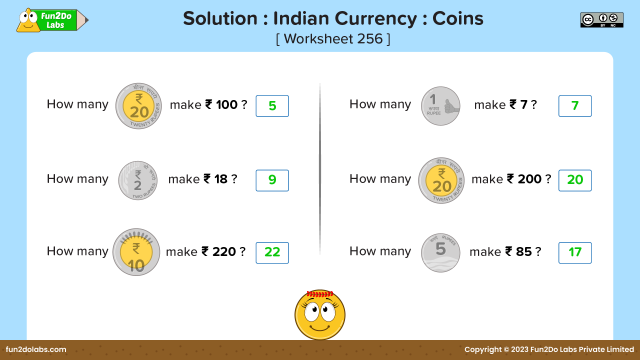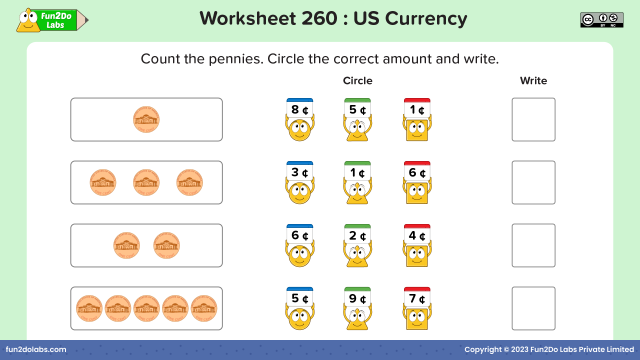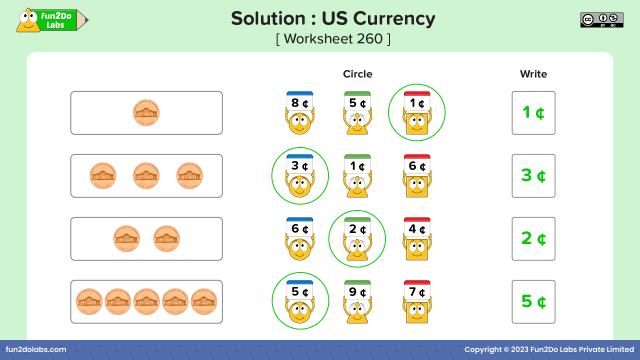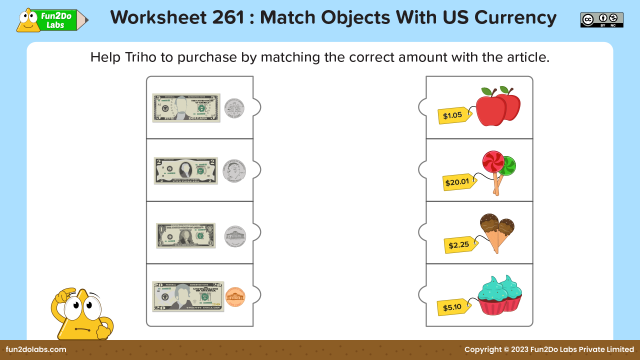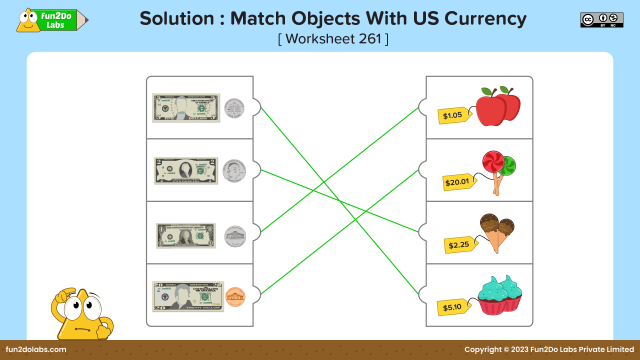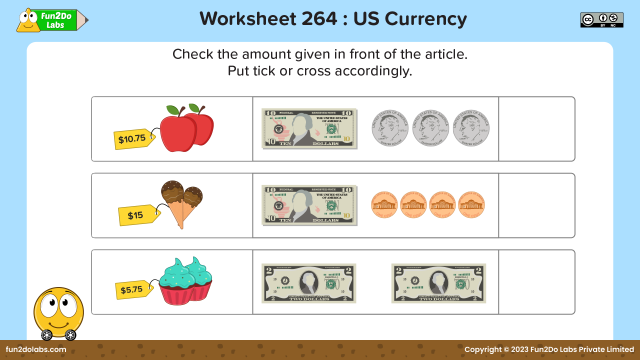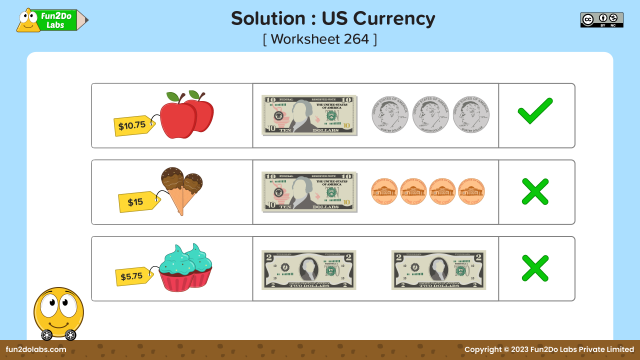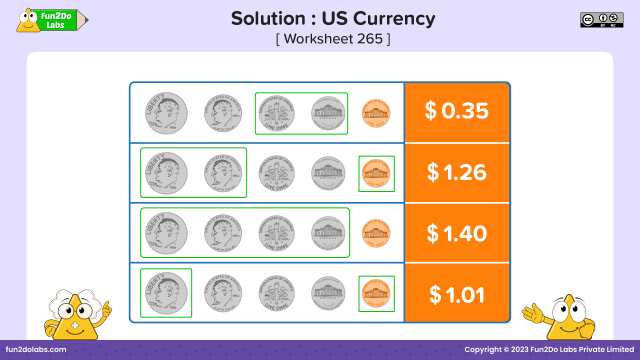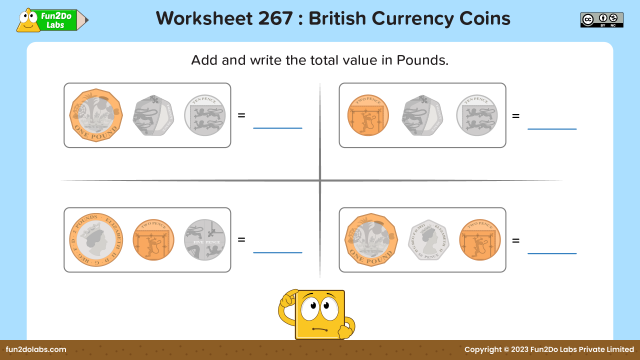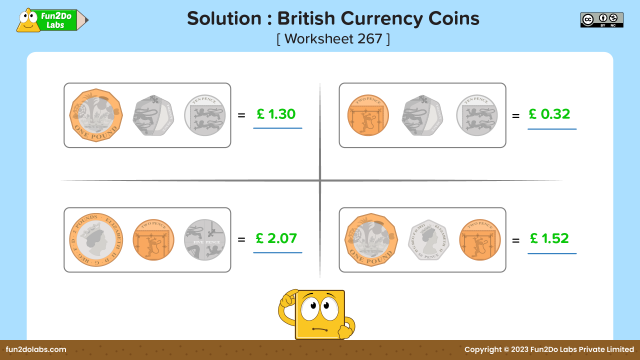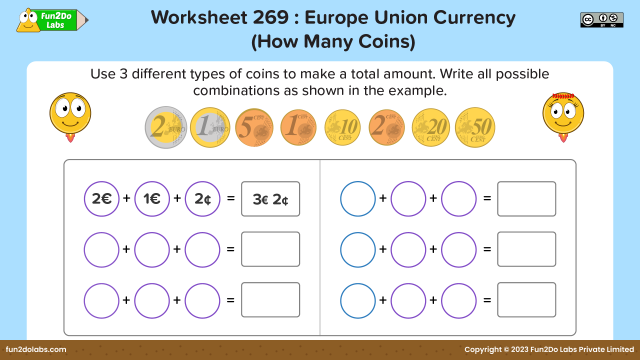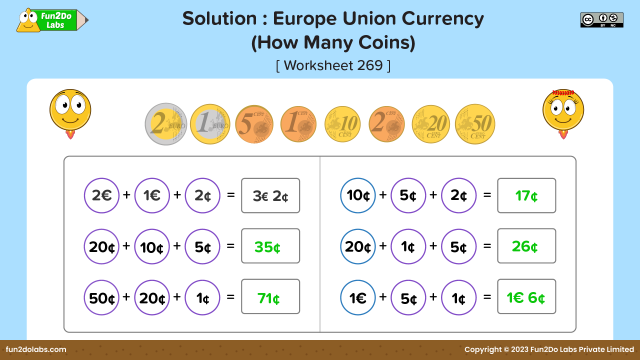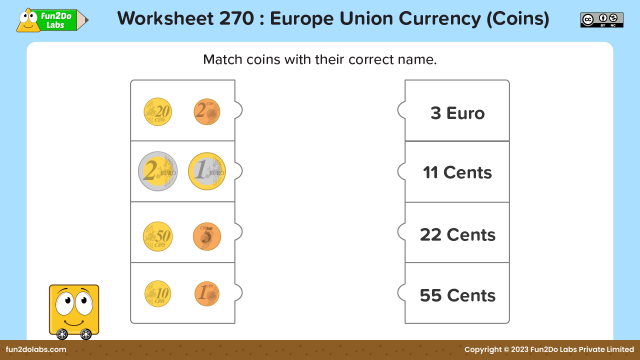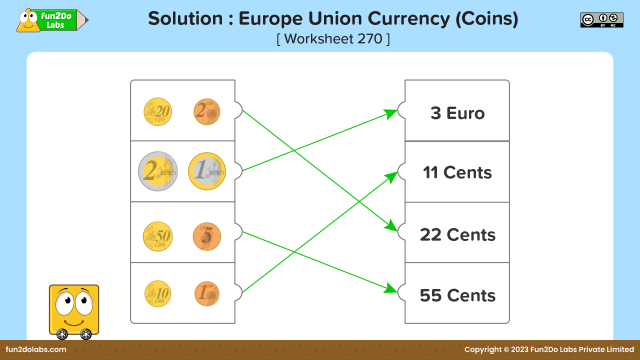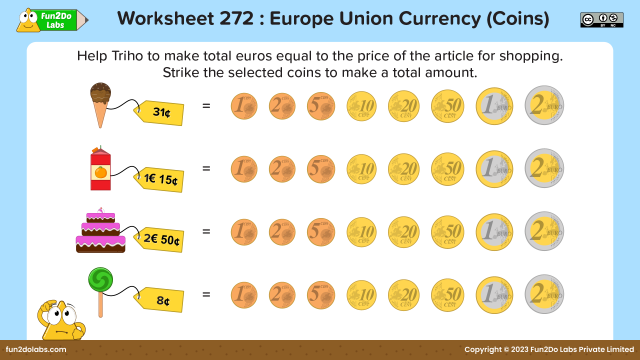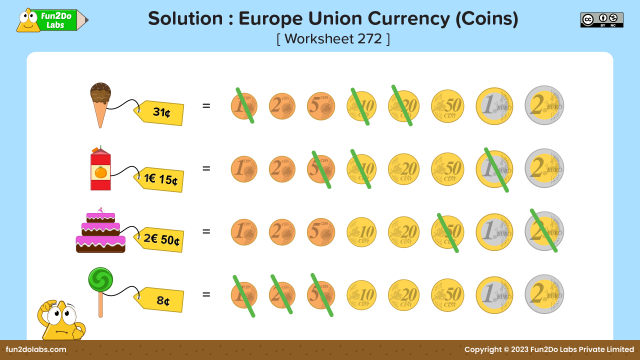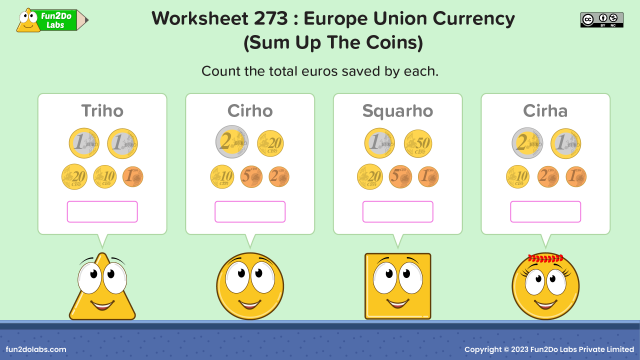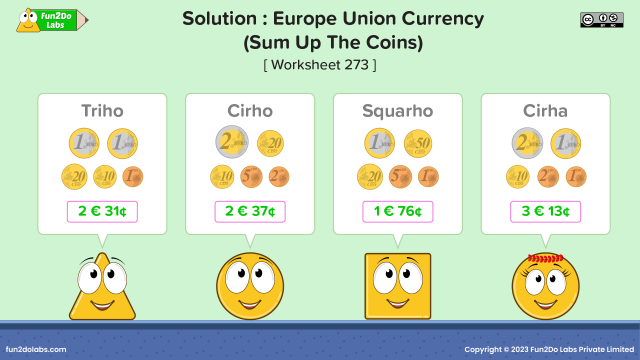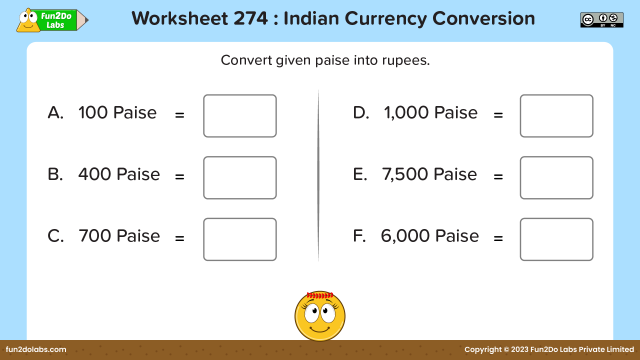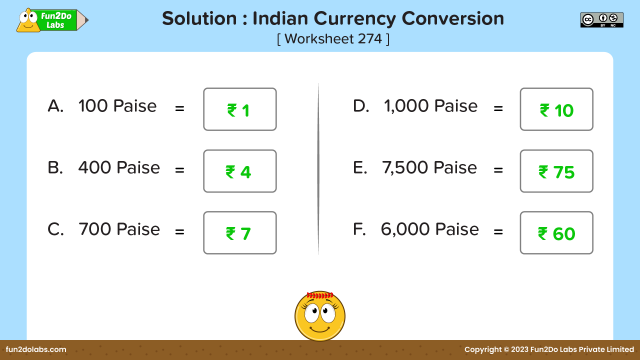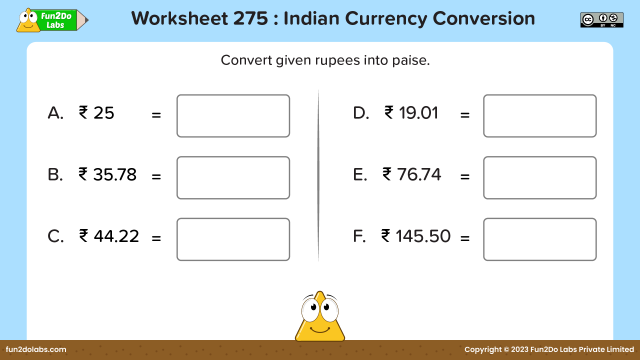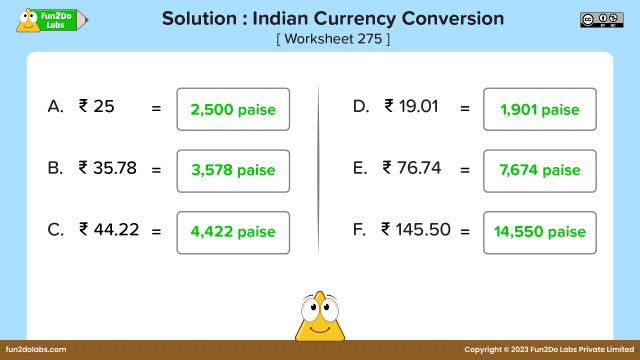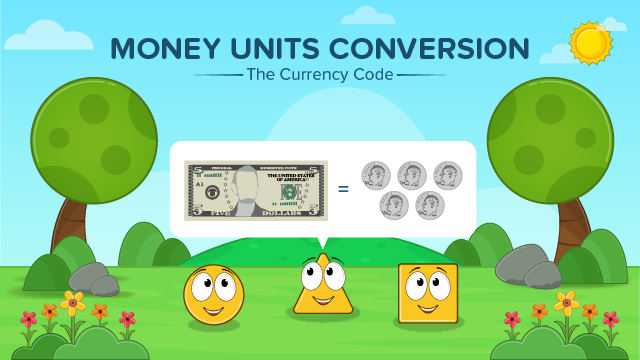
Decomposing Money :
Money is a word we use to talk about the coins and bills we use to buy things and pay for services. When we exchange money, we often need to give or receive a specific amount. To do that, we need to understand the different values of the coins and bills that make up our currency. Each country has its own type of money.
Decomposing money means breaking it down into smaller units. It’s like splitting it into different parts. To decompose money, we need to know the different denominations or values of coins and bills.
For example, if we need to pay someone $5, we can give them five $1 bills because $1 + $1 + $1 + $1 + $1 equals $5. Similarly, if we have to pay 300 rupees, we can give one 100-rupee note and one 200-rupee note, because that’s one way to decompose 300 rupees.
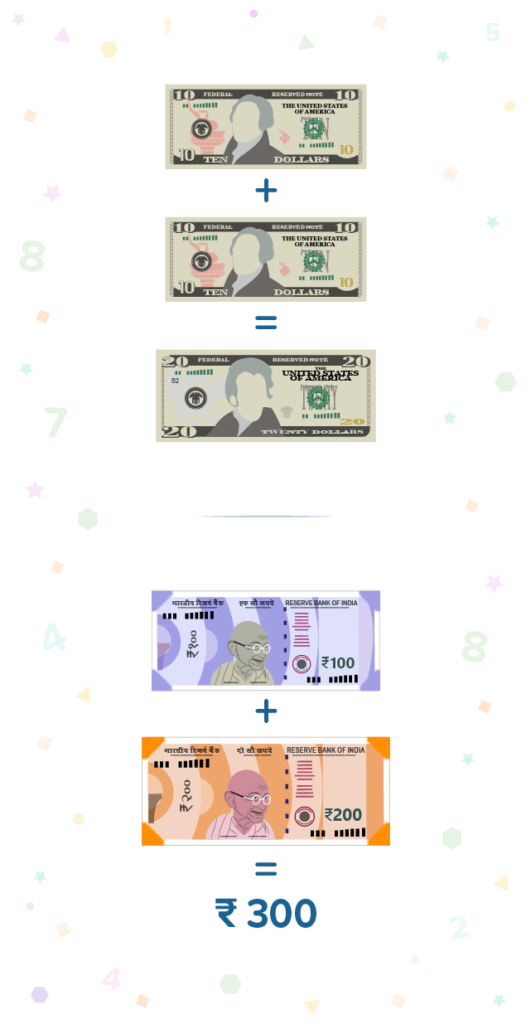
Units Conversion :
In some countries, like India, the currency includes a larger unit called rupees and a smaller unit called paise.
We use a dot (.) to separate larger and smaller units. The number on the left of the dot represents larger units like rupees, and the number on the right represents smaller units like paise. A smaller unit is written as a 2-digit number.
Here are a couple of things to remember:
(i) If an amount only has smaller units like cents or paise and no dollars or rupees, we put a zero before the dot (.) to show that there are no dollars or rupees.
For example, 25 cents is written as $0.25 or 25 cents.
55 paise is written as ₹0.55 or 55 p.
(ii) If the number of paise has only one digit, we put a zero before it to make it a 2-digit number. For example, 7 paise is written as ₹0.07 or 7 p.
1. To convert rupees into paise :
We multiply the number of rupees by 100 because :
1 rupee = 100 paise
For example, 6 rupees can be converted to paise as 6 × 100 = 600 paise, or 6p.
2. To convert a combination of rupees and paise into paise :
We convert the rupees into paise and then add the paise together.
For example, ₹6 and 50 paise can be converted to paise as 6 × 100 + 50 = 650 paise or 650p.
3. To convert paise into rupees :
We divide the number of paise by 100. We simply place a dot (.) before the second digit from the right to represent paise.
Teaching decomposing and conversion of money with kid-friendly, clear, and easy-to-understand posters from Uncle Math School by Fun2Do Labs :
Ignite kids’ curiosity with engaging stories for role play and skits, making the learning of this concept an exciting and effective experience. Teaching decomposing and conversion of money through stories from Uncle Math School by Fun2Do Labs :
Learning decomposing and conversion of money can be made enjoyable by incorporating interactive games and activities.
Piggy Bank Fun :
All kids love piggy banks, and they learn their first lesson about saving money with the help of piggy banks. This activity helps kids learn the decomposing and conversion of money in a very easy and captivating manner.
- Keep two piggy banks with big labels for paise and rupees in the centre.
- Distribute fake notes and coins to kids.
- Educators can ask for random tasks from different kids, like decomposing Rs 100, Rs 50, Rs 500, Rs 20, etc., and put them in the piggy bank one by one as per chance, or the tasks can be set on conversion of units, like converting 1000 paise into rupees, 100 paise into rupees, 500 rs into paise, etc., and put them in the piggy bank one by one as per chance.
Help your kids practise decomposing and conversion of money with interesting and engaging fun worksheets and solutions from Uncle Math by Fun2Do Labs.



